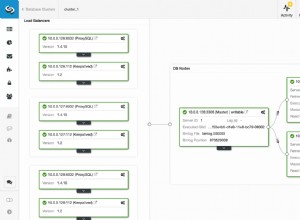Pode haver soluções mais simples para fazer isso, mas aqui está uma maneira.
Estrutura da tabela
create table Locations(LocationID int, Location varchar(50))
create table OtherTable(ID int, Locations varchar(max))
Dados de teste
insert into Locations values(1, 'Location <1>')
insert into Locations values(2, 'Location <2>')
insert into Locations values(3, 'Location <3>')
insert into Locations values(4, 'Location <4>')
insert into Locations values(5, 'Location <5>')
insert into OtherTable values (1, '')
insert into OtherTable values (2, '2')
insert into OtherTable values (3, '1, 3 ,5')
Consulta
;with cte as
(
select
T.ID,
coalesce(L.Location, '') as Location
from OtherTable as T
cross apply
(select cast('<r>'+replace(T.Locations, ',', '</r><r>')+'</r>' as xml)) LocXML(XMLCol)
cross apply
LocXML.XMLCol.nodes('r') LocID(IDCol)
left outer join Locations as L
on L.LocationID = LocID.IDCol.value('.', 'int')
)
select
C1.ID,
stuff((select ', '+C2.Location
from cte as C2
where C1.ID = C2.ID
for xml path(''), type).value('text()[1]', 'nvarchar(max)'), 1, 2, '') as Locations
from cte as C1
group by C1.ID
Resultado
ID Locations
--- ----------------------------------------
1
2 Location <2>
3 Location <1>, Location <3>, Location <5>




